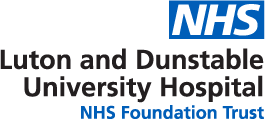By continuing to use the site, you agree to the use of cookies. You can find out more by following this link - Close
Men have a small amount of breast tissue under the nipples. Swelling of this tissue can occur as a result of hormonal changes, and this is known as gynaecomastia. This is a harmless condition but can be embarrassing and uncomfortable. It can occur in just one breast or in both, and can cause just a small lump or a larger swelling. It can commonly occur during puberty or as men get older when the male hormone levels get lower in the body. Certain drugs can contribute to it, either prescription drugs or recreational drugs such as cannabis and amphetamines and also alcohol. Products obtained for body-building purposes, particularly anabolic steroids, are known to cause gynaecomastia. Being overweight can have an effect as fatty tissue produces more female hormones.
Most swellings of male breast tissue are harmless and benign, but often referral to a Breast Unit is made to be absolutely certain. If you are referred you will be seen in the one-stop clinic for assessment. If you would rather see a male doctor please let us know when you arrive and we will try to accommodate this. You will have the chest area examined and possible also the abdomen to look for liver enlargement, and your testicles to look for any testicular swellings. This is because sometimes gynaecomastia is caused by hormonal changes resulting from liver problems or testicular lumps. You may need to have an ultrasound scan of the breast, and occasionally a biopsy. Sometimes you may need blood tests to check the hormone levels of the body.
Most cases of gynaecomastia will settle down over time and nothing needs to be done. If any drugs are contributing to it, then stopping them will help, as will reducing alcohol and losing weight if you need to. Sometimes tablets such as tamoxifen and danazol can be used to help with gynaecomastia. These drugs are not licensed to be used in this way (meaning this is not what they were developed for) and can have serious side effects, so are only used if it is felt to be necessary.
Surgery for gynaecomastia is restricted on the NHS to highly selected cases. It will only be possible if funding is approved (which is applied for by your GP) and requires you to have a normal body weight, not taking any drugs that could be causing gynaecomastia and with at least 200g of breast tissue needing to be removed (this equates to around a ‘B’ cup bra).
Men can also develop breast cancer in the breast tissue that they have. This is not related to gynaecomastia. About 1 in one hundred breast cancers are diagnosed in men, and we see 2-3 cases a year at Luton. Treatment is the same as for women, but because there is much less breast tissue in a man you will usually be recommended to have a mastectomy.

